Ruth Hull Chatlien's Blog, page 2
December 15, 2024
Sunday Review: The Glass Maker
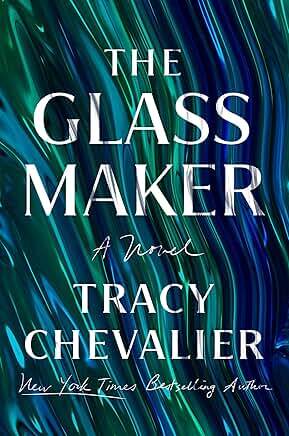
The Glass Maker by Tracy Chevalier is an unusual blend of historical fiction and magical realism. It tells the story of a glassmaking family on the island of Murano near Venice over the course of centuries. But unlike, say, a James Michener generational saga, this is the story of one generation that lives on and on as the world off the island experiences time in the usual way. In particular, the novel focuses on Orsola, a woman who has to fight to become an accomplished glass maker in a profession dominated by men.
I believe Chevalier chose this method of storytelling to emphasize that Murano has a timeless quality and that the craft of glassmaking there has changed very little over the centuries. The concept intrigued me, and I did enjoy the descriptions of the glassmaking process contained in the novel—so much so that I’m seriously lusting after a necklace of Murano glass beads.
Ultimately, however, I couldn’t sustain the willing suspension of disbelief to totally buy into this plot device. Part of the problem, I think, is that when you stretch one human life over the course of centuries, their character development arc slows down too much, and the reader gets a little bored with them. At least, that was true for me. I rated the novel as four stars when I finished it three weeks ago, and that still feels right to me. The Glass Maker is an enjoyable story told in an intriguing way, but not one of the best of the year.
December 8, 2024
Sunday Review: Two Novels about 20th Century Icons
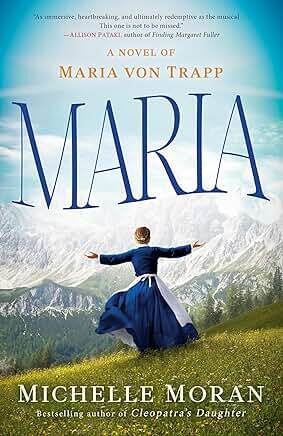
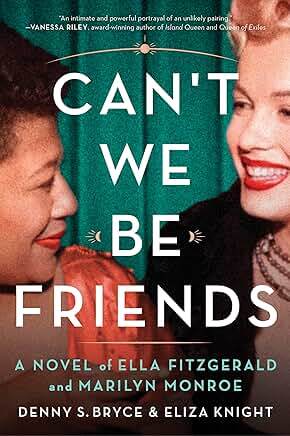
I recently read two historical novels about women who achieved great fame during the mid-twentieth century. Both books are based on research but are essentially fictional retellings of the historical personages’ life.
The first was Maria by Michelle Moran, a novel about Maria Von Trapp. Moran attempts to debunk some of the misconceptions about the characters of Maria and the captain and also to reveal a more accurate story about the family and their escape from Austria. The story is framed by Maria’s attempt to have inaccuracies in the musical The Sound of Music changed before its premiere, but anyone who knows show business will know that she’s waited too long. Opening is just a couple of weeks away. To appease her, Oscar Hammerstein sends his assistant Frances (a fictional character) to listen to Maria’s concerns and take notes—notes that almost everyone but Maria realizes will never be used.
Moran knows how to tell a well-paced story with engaging characters. I enjoyed learning about what was true and untrue in the beloved musical, as well as finding out more about what happened to the Trapp family afterward. Another unexpected subplot concerned the decline of Hammerstein’s health: The Sound of Music was his last show; he died very shortly afterward. I recommend the book to anyone who’s loved the musical and wants to know more.
The second novel was Can’t We Be Friends? by a team of authors: Denny S. Bryce and Eliza Knight. Also based on research, it’s an imagined account of the extraordinary friendship between jazz singer Ella Fitzgerald and actor Marilyn Monroe. The novel alternates between the perspectives of the two main characters.
I was surprised to learn how much the two women had in common and how very supportive of each other they were during their separate struggles with an entertainment industry that wants to control women as commodities. As anyone who’s paid attention to Taylor Swift knows, this is an ongoing struggle today.
Because Fitzgerald and Monroe’s friendship was largely private, I think these authors had to invent more of the novel’s events than did Moran in Maria. For example, they had to decide how to portray Monroe’s marriages to Joe DiMaggio and Arthur Miller, both of which have been subjects of vastly differing interpretations. Having it told by two authors made each character’s voice distinct, and the novel engaged me and gave me a deeper understanding of both women. I particularly found it an extremely emotional experience to read about Monroe’s tragic downward spiral in the last years of her life. I recommend this novel to people interested in the back story of famous icons of pop culture, especially women who tried to fight the patriarchal system.
December 1, 2024
Sunday Review: The Grey Wolf by Louise Penny
First, a personal word. I haven’t posted here in a long time because of a combination of work stress followed by a traumatic family loss. I’m going to do my best to start posting regularly again, beginning with resurrecting my Sunday reviews.

I have been a Louise Penny fan since the beginning of the Armand Gamache series. In the last few years, however, I’ve begun to approach Penny’s books with a pinch of dread. Will this be one I love? Or will she return to the type of plot line I’ve grown weary of?
I think it’s very difficult to be a writer of mysteries, particularly if you set your novels in a small town or village. Would anyone in their right mind want to live in the same village as Miss Marple? That’s like asking to be murdered. Eventually, the series of terrible crimes in such a contained location begins to seem absurd. At which point, the author has to embrace the whimsy (Midsomer Murders, anyone?) or find an alternate story line.
The early Gamache novels centered on Three Pines, a charming fictional village that time forgot, home to a set of wonderfully lovable and eccentric characters. Eventually, however, Gamache was promoted to too high a position for it to be believable that he would investigate killings in such a relatively unimportant place. That’s when the books began to feature the “Gamache uncovers a massive conspiracy” plot lines. And that’s when I began to find the books increasingly less enjoyable.
I still read them because I love Gamache, his family, and circle of friends. Some of the conspiracy novels have managed to engage me almost as much as the village cozy novels. Alas, The Grey Wolf, the latest installment, was not one of them.
Very little of the story was set in Three Pines. I miss Clara, with paint in her hair; Gabri and Olivier, the odd couple who run the bistro; wise Myrna Landers who owns the bookstore; and cantankerous poet Ruth with the pet duck who swears. And I’m weary of widespread sinister plots that threaten Quebec.
The other problem with The Grey Wolf is that it is so convoluted. Gamache and his second-in-command Jean-Guy Beauvoir return to the isolated monastery that was the setting for The Beautiful Mystery and then travel to one of the remotest points of Quebec, while Isabelle LaCoste (Gamache’s other second-in-command—illogical but just accept it) travels to the fortress monastery of Grand Chartreuse in France. Despite the slight problem that neither lay people nor women are allowed within its walls. The Sureté detectives are searching desperately for clues to stop a terrible crime of domestic terrorism from happening, even though they aren’t sure at first exactly what the crime will be.
The plot is difficult to follow—I got so confused that I stopped in the middle to reread The Beautiful Mystery, which wasn’t much help so I don’t recommend following my example. And the story drags. For only the second time, I gave a Louise Penny novel only three stars.
The last time I did that was for book 16. The next two were 5-star reads for me. The Grey Wolf was book 19.
I really hope Penny can find a way to balance the sweeping plots she seems drawn to now with the loving closeups of eccentric humanity that made many of us fall in love with her books. I’ll read her next book before deciding if I want to continue. There are too many other books to continue a series I no longer enjoy simply out of loyalty.
August 27, 2023
Sunday Review: The Orchid Hour by Nancy Bilyeau
This intriguing novel is set in New York City in 1923. Prohibition has been the law of the land for just a few years—but long enough for mobsters to have established black market supply lines and set up speakeasies throughout the city.
The main character, Zia De Luca, is not the kind of person you’d expect to be mixed up in this kind of racket. She’s a Sicilian immigrant, yes, but she’s also a war widow who has a young son and works in a branch of the New York Public Library on weekdays and in her father-in-law’s cheese shop on weekends. On the other hand, her favorite cousin Salvatore has shady connections and a questionable reputation, so she’s closer to the Cosa Nostra than the proverbial six degrees of separation.
Then three things happen to catapult Zia into her cousin’s shadow world. First, a quiet patron who’s asked her to translate a Sicilian play is shot to death outside the library; the police question Zia about their conversations. Second, she’s laid off from her job because of budget cuts, leaving her wondering how to realize her dream of saving for her son to attend college someday. Finally, her father-in-law is murdered in his store by a man masquerading as a reporter who wants Zia’s story.
Realizing that the police do not see a connection between the two crimes—and observing that they show little interest in investigating either—Zia decides to go undercover working in her cousin’s new speakeasy, an elegant nightclub named the Orchid Hour, appropriately hidden behind a florist’s shop.
The settings of the book—from the speakeasies to the neighborhood of Little Italy—are filled with vivid sensory details. (You can’t read this book without craving authentic Italian lasagna or Lindy’s famous cheesecake, or perhaps wishing you could go to the Orchid Hour to hear the trio of Russian emigré muscians!) The story abounds with colorful characters: from Salvatore Lucania (later to go down in history as Lucky Luciano), to the fictional actor David DaCosta (rival to the great Valentino), the beautiful half-Sicilian Ziegfeld Follies performer Julia Morel, the intrepid and determined Zia herself, and even a cameo by J. Edgar Hoover.
The plot has enough twists and turns to satisfy any devotee of historical mysteries. I recommend the novel and rate it five stars.
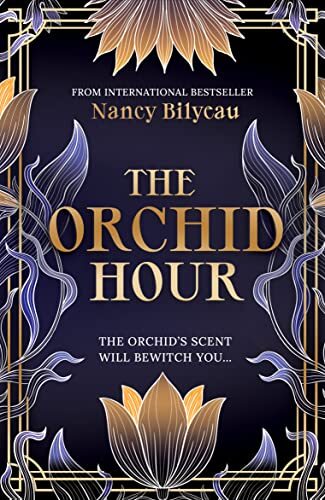
August 13, 2023
Sunday Review: The Great Believers by Rebecca Makkai
I really didn’t know what to expect when I started The Great Believers, but now I think it’s the best book I’ve read so far this year.
It’s a duel timeline novel. One story, set from 1985 to 1990, chronicles the tragic losses that occur when the AIDS epidemic reaches Chicago and begins to spread among the LGBTQ committee there—among the first generation to really experience the exuberance of living fully out and celebrating gay pride. The point of view character for this timeline is Yale Tishman, a thoughtful, quiet man who is trying to build a world-class gallery at Northwestern University and is in a relationship with Charlie Keen, who publishers a newspaper focused on LGBTQ issues. Early in this narrative, one of their best friends—Nico Marcus—dies of AIDS, forcing them all to face what is happening and make hard choices (or not, depending on the person). Yale remains close with Nico’s younger sister Fiona, who becomes a fierce advocate for all of Nico’s friends, especially those who find themselves navigating the isolating journey that is AIDS.
The second timeline features Fiona in 2015. She’s a divorced women, suffering from PTSD because of all the losses she endured in the 1980s, running a charity thrift store whose proceeds go toward AIDS work, and struggling with guilt because she’s estranged from her daughter, Claire, who not only rejected Fiona but also disappeared into a cult. Someone sends Fiona a video of a young woman in Paris who might be Claire, so Fiona takes off to that city to try to track her down. While there, she stays with a gay photographer friend she’s known since the 1980s, a man who is about to open a major exhibition that will feature some of the images from the past.
The book is warm, evocative, devastating, beautiful, and heartbreaking. Each character is so vividly drawn. I loved both Yale and Fiona, and I felt so deeply for their situations. Even though the author is much younger than the people she’s writing about, this all felt very authentic to me. Because I lived in Chicago during the 1980s and worked with people who did some AIDS awareness projects at our company, I could remember a bit of what that period was like, although my experience of it was definitely far removed from what the characters of this book went through. This novel made me wish I’d forced myself to know more, care more, and do more about the crisis.
I honestly want to run around telling everyone I know to read this novel. It affected me that deeply.
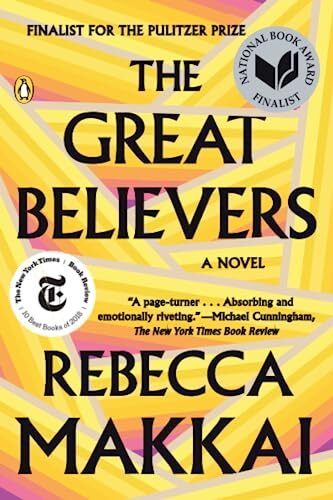
June 11, 2023
Sunday Review: The Next Ship Home by Heather Webb
The Next Ship Home is an enlightening and enjoyable novel about Ellis Island at the very beginning of the 20th century. The two protagonists seem, at first glance, to have little in common. Alma comes from a German family that is well established in New York. Her mother and stepfather run a popular beer hall in a largely German area, but the family is saving to move to a better neighborhood. However, Alma’s life is not as rosy as it might at first seem. She is plain and studious, and she has neither managed to marry nor attract potential suitors. Her stepfather resents her for being a “financial burden” on him, so he arranges for her to work as a matron on Ellis Island.
There, Alma joins an overworked and often resentful staff—and she finds troubling evidence that immigrants are not being treated with the respect, kindness, and helpfulness they deserve. Early in her employment, she befriends two Italian sisters, Francesca and Maria, who are fleeing an intolerable situation in Sicily. In her insular German-American community, Alma has been taught that Italians—and Sicilians in particular—are criminals who are little better than animals. Her growing friendship with Francesca, who wants only to get a job so she can build a new life, forces her to rethink those prejudices.
At the time the novel is set, 1902, the press and the government were trying to uncover abusive and fraudulent practices taking place at the famous port of entry for so many immigrants. Alma and Francesca get caught in the middle of the explosive situation and must make a difficult choice between ignoring the wrongdoing or confronting it at the risk of their own wellbeing. Francesca in particular faces potentially disastrous consequences; the novel’s title names the very threat that hangs over her head if she angers the wrong people.
The characters are well-drawn, the plot never lags, and the background about Ellis Island is interesting and appalling in equal measure. Highly recommended.
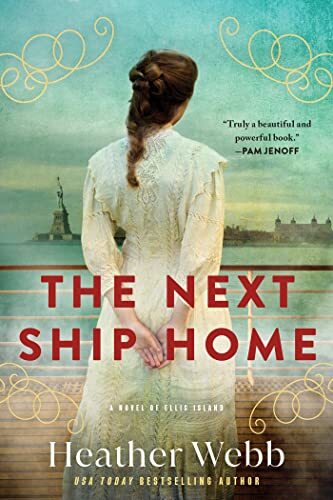
May 20, 2023
Don’t Assume!
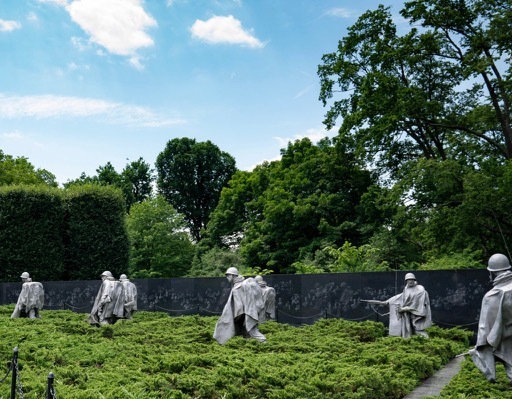
Korean War Veterans Memorial in Washington, D.C.
Today’s lesson in being a historical novelist is “Don’t assume anything.”
In my novel-in-progress, I have a character whose older brother has to serve in the Korean War. And because my character is going to talk about what’s going on to his girlfriend (my main character), he (and therefore I) have to know the facts. Because sure as shooting (excuse the pun), if I have one of the following details wrong, someone somewhere is going to shred the book in a review or in an incensed email to me.
– When did young men have to register for the draft? I assumed 18. In this, I was correct.
– When did young men have to go for their preinduction physical to be assigned their draft status? At first, I assumed 18. In this, I was wrong. Initially for Korea, it was 19. Later, they lowered it to 18-1/2 because they needed more men. Tommy (my guy) was still in the 19-year-old time period.
– How long was basic training? At first, I assumed it was the same as during WWII. Wrong. Someone in the government got the brilliant idea to shorten it, just train recruits in “camp life” stateside, and let the officers in Korea train the recruits in combat conditions … while they were undergoing combat. It didn’t work out so well (I wonder why), so they revamped the program for Vietnam. (This applies only to U.S. troops, not the rest of the countries making up the UN forces in Korea. The Brits, for one, had more sense.)
– Where would someone recruited from Illinois do his basic training? Silly me, I thought it was obvious that someone from Illinois would go to Fort Leonard Wood in neighboring Missouri. But remember today’s lesson. Don’t assume. So today I spent more than two hours trying to answer this question definitively. There are lots of written and recorded histories by Korean War vets on the Internet. The trick was finding one that would tell me a) where the soldier was from and b) where he did his basic training. I finally found a site that allowed me to sort by state (Illinois) and by topic (basic training). And I found five relevant video interviews. Turns out that each one of the KW vets was trained at a different place: Camp Breckinridge, KY; Fort Leonard Wood, MO; Fort Bliss, TX; Fort Bragg, NC; and Fort Bennington, GA.
Fortunately for me (or I’d still be searching), one of the interviews was with a man who was the right age (give or take a couple of months), who was drafted just a couple of months after my guy, and most importantly, served in a division of the 8th U.S. Army that actually fought in the battle where I need my guy to be. Which means Tommy gets to be shipped down to El Paso, TX, for training. Yay.
Also fortunately for me, I’ve already discovered how long troop ships took to sail from San Francisco to Korea: two to three weeks. Putting everything together, I now know that poor Tommy will be in Korea fighting in time to be captured during the Battle of the Soyang River.
That’s the other lesson about historical novelists. We have no heart when it comes to our characters’ fates. Especially the minor ones.
May 14, 2023
Sunday Review: Dark Eyes by Nina Romano
In the Soviet Union of 1956, former ballerina Anya, who can no longer dance because of an injury, struggles to make a life for herself and her disabled daughter Iskra. She is aided in this by the child’s grandmother Calina—until a brutal crime occurs. During the ensuing police investigation, Anya meets and is powerfully attracted to a police photographer named Andrei, a man with his own dangerous secret. Together, the two discover a hidden world of greed, brutality, and corruption—a web of crime that threatens the new lovers and Anya’s child.
Dark Eyes teems with vivid characters and is rich with the customs, culture, and conditions of life in Khrushchev’s Soviet Union. Readers who are interested in Cold-War-era thrillers won’t want to miss this romance-adventure by the author of The Girl Who Loved Cayo Bradley.
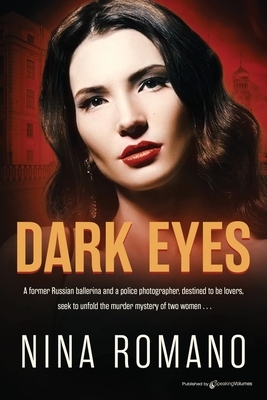
September 18, 2022
Sunday Review: The Reading by Barbara Monier
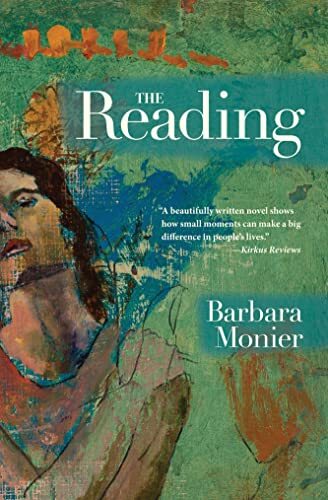
This is a novel about taking stock of one’s life—and perhaps finding the courage to jettison our defense mechanisms. Esmé, a writer in her sixties, is experiencing a prolonged creative paralysis. Instead of working on a new novel, she’s put off dealing with her writer’s block by continuing to give public readings of her last published work. Then one night someone from her past shows up in the audience, and the unexpected encounter propels her into reviewing both the childhood loss that scarred her and her first year of college, which she views as the worst year of her life. The two events have combined to turn her into a defensive person who deliberately avoids both memory and commitment.
Her voyage of reminiscence occurs at the same time that she faces an upheaval to her current life as major as her long-ago enrollment at a strange university in an alien part of the country. Her lover, Gino, has asked her to live with him, a move that will force her to leave the carefully constructed routine and cocoon that have surrounded and cushioned her for decades. Esmé makes the physical move, but can she risk the psychological and emotional shifts that will be necessary to commit herself to Gino? Or will she once again retreat?
Esmé is a sharply drawn character who makes mordant observants about the world and records her experiences in memorable detail—in sentences such as this one about a childhood visit to Pittsburgh: “The Sound of Music on a screen so immense that I felt pressed back in my seat by a barrage of pictures and sounds—I had nightmares about the Baroness’ nostrils and the way the peals of thunder rattled inside of my chest.”
The COVID-19 pandemic makes its appearance, but instead of dominating the narrative, it works on Esmé as it did on so many of us—as a catalyst toward reevaluating our lives. I found myself rooting for Esmé the entire novel, and the ending felt satisfying without being too tidy or forced.
The publication date for The Reading is September 27, but the Kindle version is available for preorder on Amazon, and the paperback can be preordered at Amika Press.
September 4, 2022
Sunday Review: Fiction about Argentina’s Dirty War
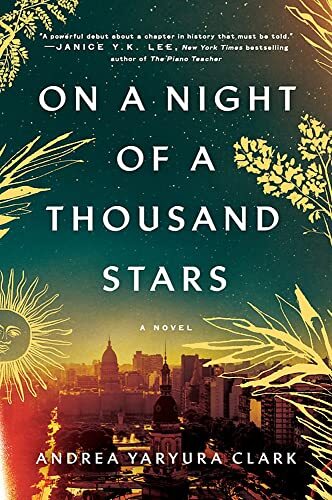

For those who don’t know the history of the Dirty War, I am going to begin with some background. (If you already know, skip to the fifth paragraph.) From 1974 to 1983, Argentina conducted a Dirty War that consisted of state terrorism against its citizens. The government hunted down political dissidents, leftist guerillas, socialists—and any students, intellectuals, and activists the junta feared might become threats.
People were snatched from school, work, home, the street. They were tortured for information and for punishment. They were beaten, shot, and buried in mass graves. They were drugged and thrown from airplanes, still alive, over open water. Even today, they are known as los desaparecidos, the disappeared. Pregnant women who were taken were held until they gave birth and then disposed of; their children were given to government officials or military officers who wanted to adopt.
An estimated 30,000 Argentinians were disappeared, and an estimated 500 babies were stolen. Many of the grieving families still have no answers. Many of the perpetrators of these crimes against humanity were pardoned. Not until the 2000s did the Argentine government revoke the amnesty laws and begin prosecution.
Because of my work on world history textbooks, I’ve known about the Dirty War for decades, but not until recently did it occur to me to read fiction about it.
In the last two weeks, I have listened to audiobooks of two of them: On a Night of a Thousand Stars by Andrea Yaryura Clark and Perla by Carolina de Robertis.
Purely by accident, I chose books that have several plot points and themes in common. Both have main characters who are young women, born during the Dirty War and raised in families that are part of the Argentinian elite. Both Paloma and Perla begin knowing little about their country’s terrible past. Both find romantic partners who help them learn the shocking history their parents hid from them—and their families’ own roles in the Dirty War.
And yet, the two books are also quite different. On a Night of a Thousand Stars is the more straightforward narrative. It’s a dual timeline novel. One story focuses on Valentina, a young woman who attends college and then begins working as an architect during the opening years of the government campaign of terror. The other story, set twenty years later, focuses on Paloma, a young woman who is raised by Argentinian expats in New York City. Because her knowledge of Argentina has been gleaned mostly from visits to her grandfather, she starts out understanding little about the Dirty War, but she makes some discoveries that motivate her to find out what if any role her father played in combatting the oppression. Paloma’s father, who was once Valentina’s lover, is the link between the two time periods.
Perla, on the other hand, has elements of magical realism, which felt entirely appropriate for the South American setting. The main character is the daughter of a naval officer, which is a huge red flag to the knowledgeable reader that her family has dark secrets to hide. Perla’s lover, an investigative journalist, nudges her to question her parents, but she can’t—and her inner conflict causes her to break up with him. Then, while her parents are away, she is visited by a mysterious man, who smells of rotting debris on a beach and who constantly sheds water on the parlor floor. This uncanny intruder is the catalyst that helps Perla intuit her past.
I enjoyed both novels. My personal favorite was Perla, which was more literary and, for me, better conveyed the tragedy of Argentina’s past. But for readers who don’t enjoy magical realism, I can recommend On a Night of a Thousand Stars without hesitation.



